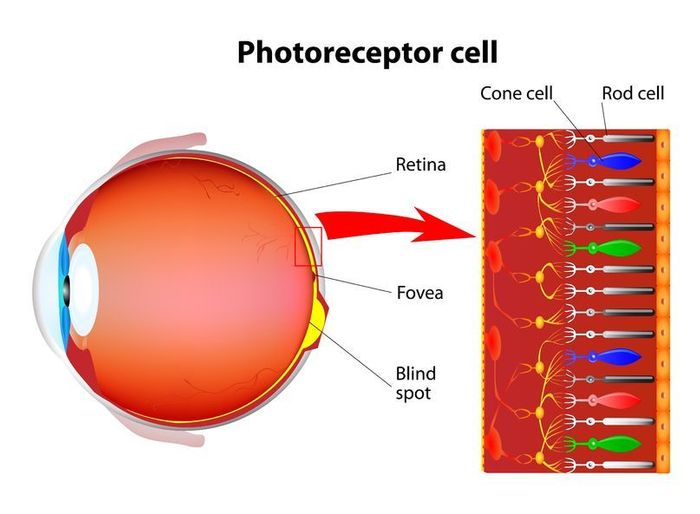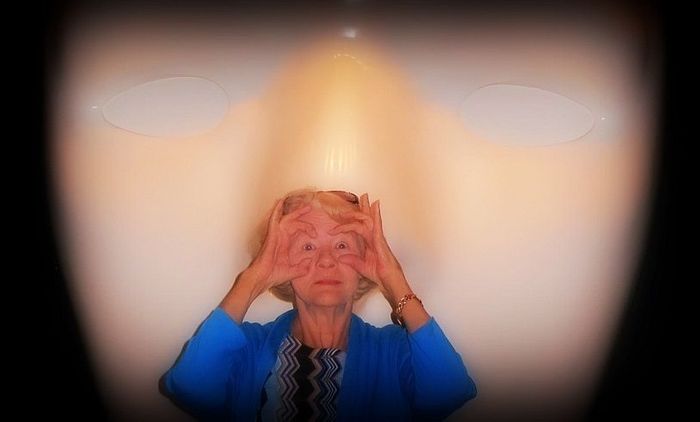Many people lose their ability to clearly distinguish certain colors as they age, with losses typically starting around age 70 and getting worse over time. The loss of visual acuity as you age is experienced as an actual physical impairment and should be treated accordingly.
The reason why the vision of color is affected is not 100% clear. The photoreceptor cells in the Retina, called Rods and Cones, which are responsible for normal color vision, the decline in sensitivity as we age, causing colors to become less bright and the contrast between different colors to be less noticeable.
Below you will see an illustration to demonstrate the Rods ( light) and Cones ( colors), situated in the Retina of the eye.
Rod cells are photoreceptor cells in the Retina of the eye that can function in less intense LIGHT than the other type of visual photoreceptor, cone cells. Rods have little role in Color Vision which is one of the main reasons why colors are much less apparent in darkness.
Cone cells, or cones, are one of three types of photoreceptor cells in the Retina. They are responsible for COLOR VISION and function best in relatively bright light as opposed to rod cells, which work better in dim light.
And of course, general age-related vision problems such as Cataracts, Glaucoma, Macular Degeneration and Floaters cannot be excluded. As we age, muscles that control our pupil size and reaction to light, lose some strength. This causes the pupil to shrink and become less responsive to changes in ambient lighting.
According to many resources, the elderly sees everything in a more yellow tone as opposed to its true colors. Blue colors may appear faded and less prominent, so in effect, the Blue-Yellow Spectrum is compromised.

So keep in mind when designing a space for the elderly:
- Avoid dull and muted colors.
- When decorating a space for Seniors, choose brighter colors and ensure higher contrast between surfaces such as steps and general flooring, seating and countertops, which can help with acuity loss. With that being said, make sure your client doesn’t perceive a dark area on the floor as a “Hole in the ground”.
- It has been said that placing a dark rug in front of a door, would keep a confused elderly person from opening the door, as they see it as a hole in the ground. Which of course is an effective method to avoid them from “getting lost” or running away
- Because of pupil changes and loss of eye muscle strength, people in their 60’s need three times more ambient light for comfortable reading than those in their early adult years. Avoid dazzling, brightly lit rooms and window exposures, but make sure to address the need for sufficient light resources, so that the wavelengths of the stronger lit colors, bounces back to the eye and would make areas and objects easier identifiable.
- When decorating, use familiar colors such as seen in nature and warm tones of peach, tan colors which are comforting and stronger blues and purples, since everything they see, seems yellower.






